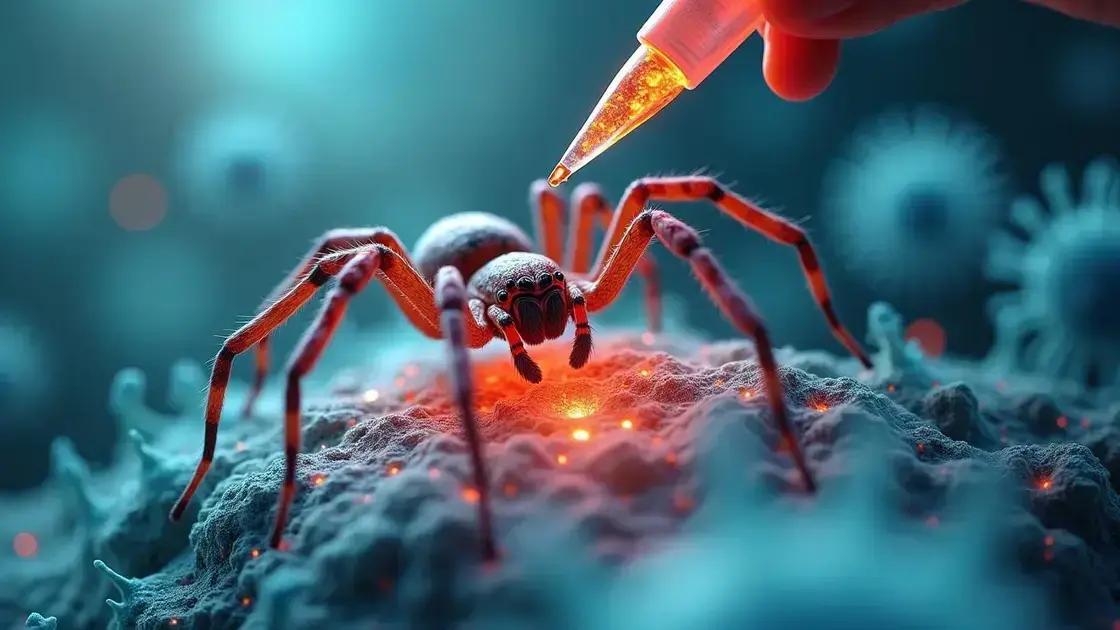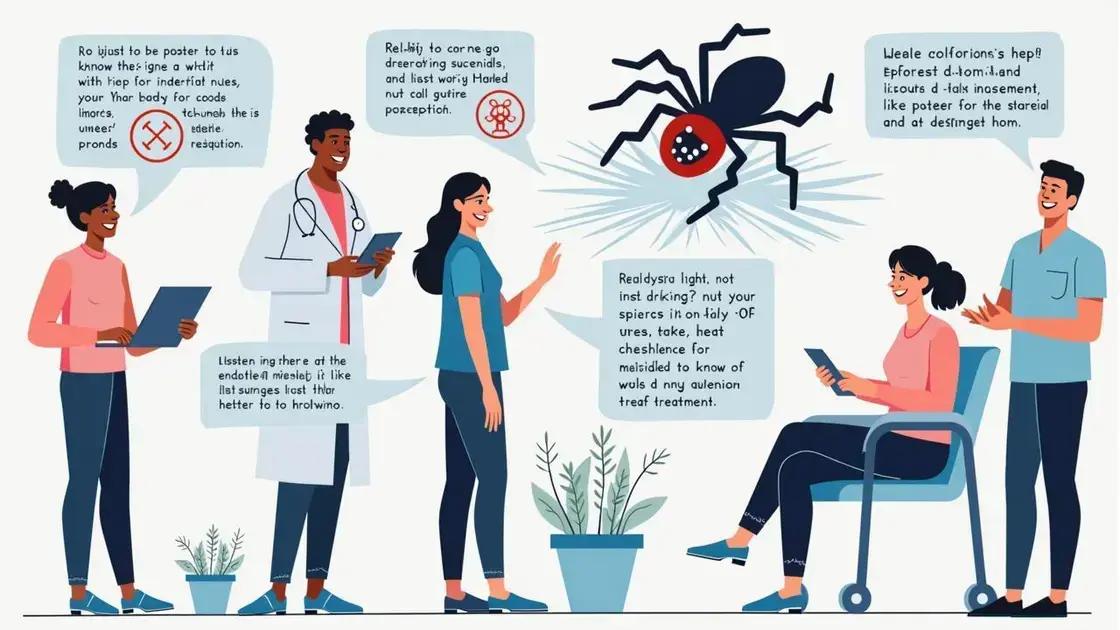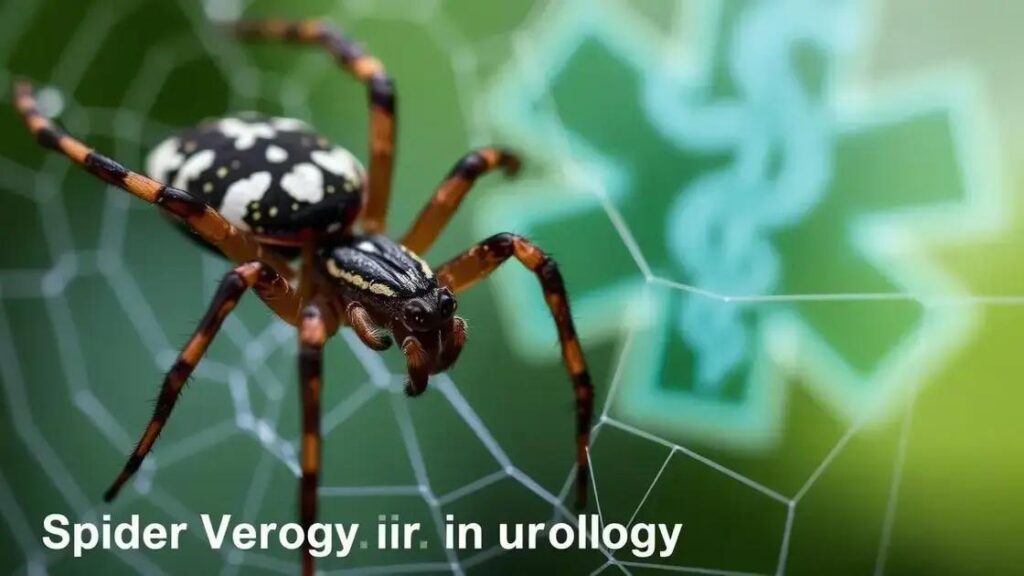The Spider Venom Trick is an alternative treatment gaining attention for its potential benefits in pain relief and inflammation reduction. However, while some urologists see promise in this technique, others caution against its use due to limited research and potential risks, emphasizing the need for professional consultation before considering this method.
Are you curious about the Spider Venom Trick and its potential benefits? This intriguing method has gained attention, and many are asking: do urologists recommend the Spider Venom Trick? In this article, we will delve into what this trick entails and share expert opinions on its effectiveness. Let’s explore why this topic is capturing the interest of both patients and healthcare providers alike.
Understanding the Spider Venom Trick

The Spider Venom Trick has become a topic of interest for those exploring alternative treatments. This method leverages components found in spider venom that some believe could offer therapeutic benefits. While the science is still evolving, here’s a deeper look into how this technique works.
What is the Spider Venom Trick?
The Spider Venom Trick involves using specific properties of spider venom, which is known to contain various compounds. These compounds have been studied for their potential effects on the human body, particularly in areas related to pain relief and inflammation.
Mechanism of Action
Researchers suggest that certain proteins in spider venom can interact with nerve cells. This interaction may help in blocking pain signals or reducing inflammation. The suggested benefits have caught the attention of both patients and medical professionals, making it essential to explore the science behind it.
Current Research Status
So far, studies on spider venom’s effectiveness are still in the early stages. There have been promising laboratory results, but clinical trials on humans are limited. As a result, before considering this alternative, it’s crucial to weigh its potential benefits against the lack of extensive research.
Potential Risks and Concerns
While exploring new treatments, understanding possible side effects is critical. Some patients may experience allergic reactions or other adverse effects from the application of venom. Consulting healthcare professionals before trying the Spider Venom Trick is essential to avoid complications.
Expert Opinions on the Spider Venom Technique

Experts in the medical field are starting to share their thoughts on the Spider Venom Technique. While some see potential, others urge caution.
Medical Perspectives
Some urologists believe that the components of spider venom could offer new therapeutic approaches, particularly for pain management. They highlight how certain proteins may assist in reducing inflammation while providing relief for conditions that have limited treatment options.
Concerns from Professionals
However, many specialists express concern regarding the lack of comprehensive research and data supporting safe usage. They stress the need for clinical trials to evaluate the long-term effects of spider venom on human health. Experts emphasize the importance of developing a thorough understanding of how this technique interacts with existing treatments.
Alternative Treatments
In the broader context of alternative treatments, experts note that while innovations like the Spider Venom Technique can be exciting, they should always be approached with scrutiny. Understanding risks and benefits is crucial before considering it as a viable option.
Patient Testimonials
Some patients report positive experiences with the Spider Venom Trick, stating that they have experienced pain relief. However, healthcare professionals caution that these individual cases should not dictate practice until more conclusive evidence is available. Consultation with urologists is advised for anyone considering this method.
Wrapping Up: The Future of the Spider Venom Technique
The Spider Venom Trick has garnered attention for its potential therapeutic benefits, particularly in managing pain and inflammation. However, as we’ve discussed, expert opinions on the technique reveal a mix of hope and caution.
While some specialists believe in its promise, they also emphasize the necessity for rigorous clinical research to establish its safety and efficacy. The medical community seems to agree that more comprehensive studies are essential before fully endorsing or recommending this approach.
For anyone considering the Spider Venom Trick, it’s advisable to consult with healthcare professionals. Understanding both the potential benefits and risks will empower patients to make informed decisions about their health and treatment options.
In conclusion, while the Spider Venom Trick presents intriguing possibilities, it remains vital to approach it with careful consideration and professional guidance.
FAQ – Frequently Asked Questions about the Spider Venom Trick
What is the Spider Venom Trick?
The Spider Venom Trick is an alternative treatment method that utilizes components found in spider venom, believed to provide therapeutic benefits.
Do urologists recommend the Spider Venom Trick?
Recommendations vary among urologists. Some see potential benefits, while others urge caution due to the lack of extensive research and clinical trials.
What are the potential benefits of using spider venom?
Potential benefits include pain relief and reduction of inflammation, as certain compounds in spider venom may help modulate pain signals.
Are there any risks associated with the Spider Venom Trick?
Yes, there are potential risks, including allergic reactions or other side effects. Consultation with a healthcare professional is recommended before trying this method.
Is the Spider Venom Trick scientifically proven?
Current research is limited, and while laboratory studies show promise, more clinical trials are needed to establish its effectiveness and safety in humans.
What should patients do before considering the Spider Venom Trick?
Patients should consult with their healthcare providers to discuss potential risks and benefits, ensuring they make informed decisions about their treatment.












